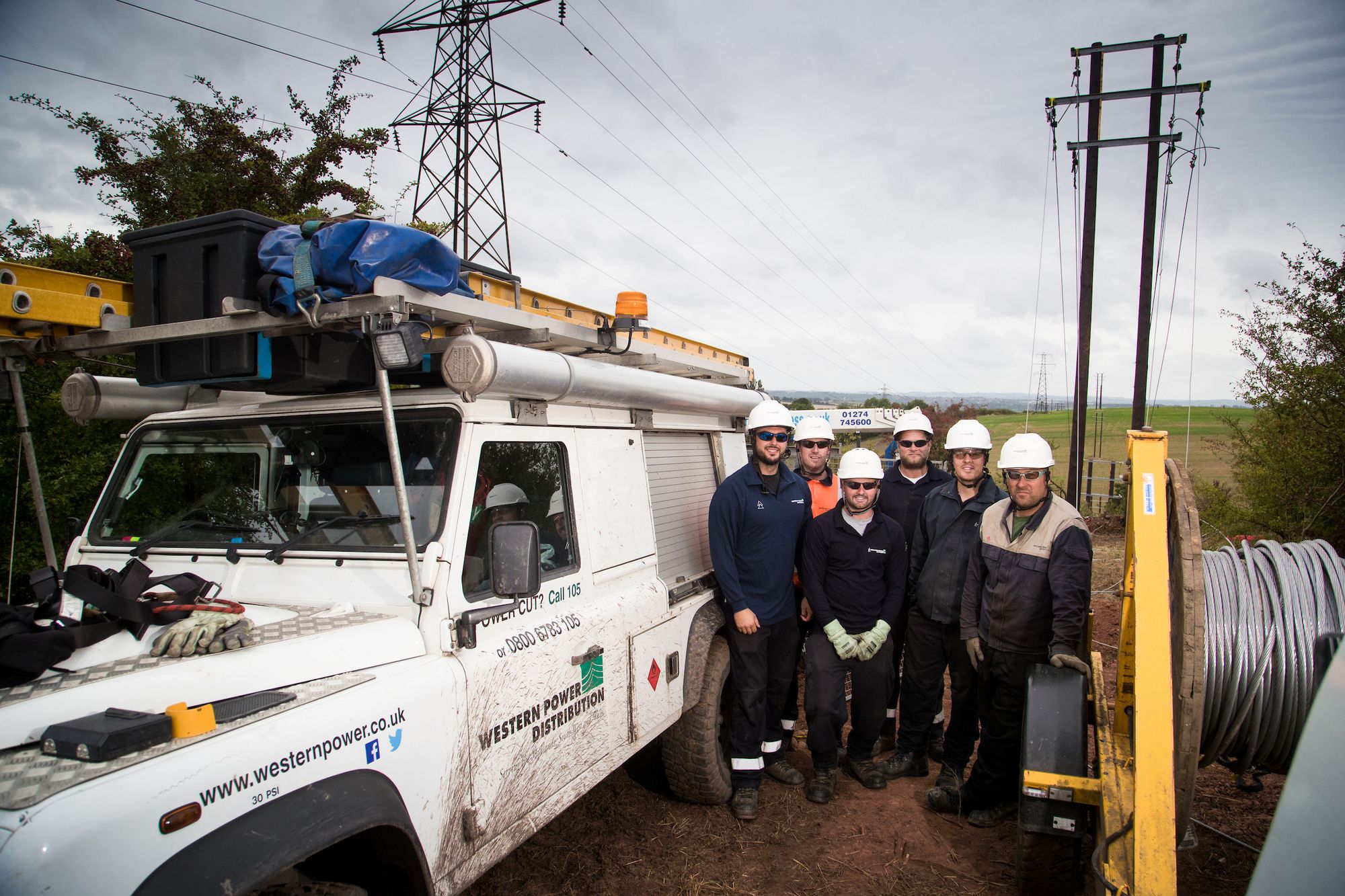A double circuit build
An overhead line rebuild requiring special dispensation, learning on the job, extra stout 17 metre poles and an extra-long reach crane presented the Alfreton team with some new challenges.
On receiving the request to rebuild a double 33kV overhead circuit at Kirkby-in-Ashfield, near Mansfield, the team – many of whom had never carried out this type of rebuild before – agreed to investigate the feasibility.
The circuit with four towers and ten wooden H poles needed attention, due to its age and condition. However, several issues needed to be addressed before the decision could be made, as Planner Mike Webster explained.
“The main issue with rebuilding using wooden poles was the very uneven land levels in this area, so we had to obtain a line profile based on an assumed route, to check that it would be feasible. Also, as this was a double circuit 33kV line, we had to get special dispensation to rebuild it, as there isn’t currently a specification for this. The alternative would have been to build two single overhead or underground circuits, which would have been significantly more costly and difficult to obtain consents from landowners.
“Once the profile had been supplied, it became clear that the wooden pole option would be possible, so I drafted a plan to enable discussion with the landowners, the local authority, Network Rail and our ecologist to make sure that they were happy with our proposals,” said Mike.
Wayleave Specialist Caroline Child then set about obtaining the relevant permissions from the landowners.
“I made contact with the four land owners involved, along with their agents, to agree access routes that would minimise damage to the land. They were very accommodating although the main land owner requested that we carry out the work in August after harvest, so as to avoid damaging crops.
“Planning permission had to be obtained from the local Council and the Department for Business, Energy and Industrial Strategy (Secretary of State), which took the majority of the time, but thankfully got approved with no real issues.

Left to right – Tom Porter, Lee smith, Luke Armstrong, Kevin Flewitt, Simon McCormack and Dave Edwards.
“Due to a railway crossing, discussions were also required with Network Rail to ensure a supplemental Wayleave agreement could be arranged (to allow us to put equipment on their land) and a relevant Asset Protection Agreement – an indemnity cover against damage Network Rails’ assets, which Planner Mike organised with our legal team. Once all permissions were in place, the permit to cross the railway line was granted,” said Caroline.
As much of the land was agricultural and encompassed a Site of Special Scientific Interest with a small woodland, an ecology report had to be carried out to identify any protected flora and fauna.
“The report highlighted some possible bat activity and although there were badgers in the area, they were not found along the working corridor. Bird nesting was also highlighted, so after consultation with Natural England, any tree cutting had to be carried out outside the bird nesting season.
“We wanted to start the work in August, so we quickly organised tree trimming early in the year to prevent any harm and an ecologist and bat expert supervised the work, to ensure they remained safe,” added Caroline.
Work on site began on time with the erection of the new poles, while the existing tower circuits were still live. “The new pole terminations went up first, we then switched out the existing circuits and jointed the new ones onto the existing 33kV underground cables,” explained Technician Kev Gregory.
“Colleagues from Projects arranged for the tower circuit conductors and towers to be removed in September and our Linesmen strung the conductors on the new poles, completing the work and allowing the circuits to be energised.
“The difficult terrain called for the use of some extra stout 17 metre poles, making the work very physically demanding. Several members of the team hadn’t previously been involved in constructing a 33kV overhead line, so they were mentored by more experienced linesmen and learnt on the job,” he added.
“Despite the challenges, the scheme provided valuable experience for the newer members of the team. Now complete it will help to boost the reliability of supplies to the area and is much less visually intrusive than the previous construction,” added Team Manager Caroline Curzon.
- About Us
